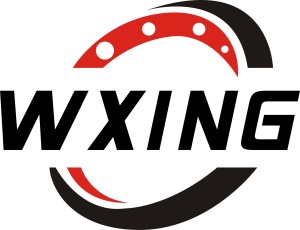PRODUCT
The influence of chemical elements on the performance of the steel
by:Waxing
2020-09-09
1, carbon (
C)
: carbon content in steel increases, the yield point and tensile strength increases, but the plasticity and impact is reduced, when carbon 0.
More than 23%, steel welding performance is bad, so used for welding of low alloy structural steel, carbon content is generally not more than 0.
20%.
High carbon content will also reduce steel atmospheric corrosion resistant ability, in the open yard of high carbon steel is easy to rust;
In addition, the carbon steel can increase the cold brittleness sensitivity and effectiveness.
2, silicon (
Si)
: in the steel-making process to add silicon as a reducing agent and deoxidizer, so killed steel containing 0.
15-0.
30% of the silicon.
If the silicon content in steel more than 0.
50 -
0.
60%, silicon alloy elements.
Silicon steel can obviously improve the elastic limit, yield point and tensile strength, so it is widely used in spring steel.
Add 1 in quenched and tempered steels.
0 to 1.
2% of silicon, the strength can increase 15-20%.
Silicon and molybdenum, tungsten, chromium, etc, have the effect that improve the corrosion resistance and oxidation resistance, can make heat resistant steel.
1-4% of the low carbon steel containing silicon, high permeability, silicon steel sheet used for electrical equipment industry.
Silicon content increases, reduces steel welding performance.
3, manganese,
Mn)
: in the process of steelmaking, manganese is good deoxidizer and desulphurizer, manganese content in steel commonly 0.
30-0.
50%.
Add 0 in carbon steel.
'More than 70% even if the' manganese steel, general steel quantity of steel not only have enough toughness, and have higher strength and hardness, improve the hardenability of steel, improving steel hot working performance, such as 16 mn steel A3 40% higher than the yield point.
11-14% of manganese content in the steel has high wear resistance, used to shovel bucket, ball mill liner, etc.
Manganese content increased, and reduce the corrosion resistance of steel, reduce the welding performance.
4, p (
P)
: in general, phosphorus is harmful elements in steel and increasing steel cold brittleness, make bad welding performance and reduce the plastic, the cold bending performance go bad.
So usually require phosphorus content in steel is less than 0.
045%, high-quality steel demand to be more low.
5, sulfur,
S)
Sulfur: under normal circumstances is harmful elements.
To produce steel hot brittleness, reduce the ductility and toughness of steel, cracking during forging and rolling.
Sulfur is unfavorable on welding performance, reduce corrosion resistance.
So usually require sulfur content less than 0.
Less than 0 055%, high-quality steel requirements.
040%.
0 in steels.
08 -
0.
20% of the sulfur, can improve the workability, cutting is usually called free-cutting steel.
6, chromium (
Cr)
: in the structural steel and tool steel, chromium can significantly improve the strength, hardness and wear resistance, but at the same time reduce the plasticity and toughness.
Chromium can increase the oxidation resistance and corrosion resistance of steel, so it is stainless steel, heat-resistant steel alloy elements.
7, nickel,
Ni)
: nickel can improve the strength of the steel, and maintain good plasticity and toughness.
Nickel is higher for acid and alkali corrosion resistance ability, antirust and heat-resistant ability at high temperature.
But as a result of nickel is a scarce resource, therefore
Custom message






















































































